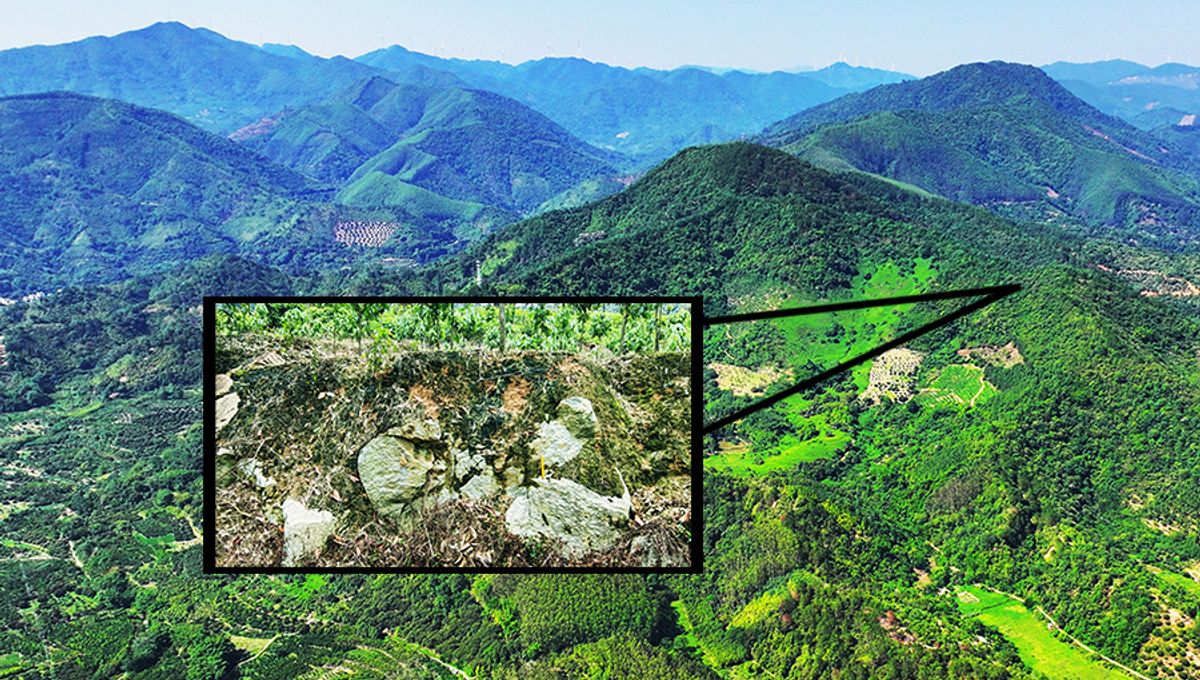
Among the hilly forests of southern China, scientists have discovered the largest modern meteorite impact crater on Earth. Dubbed the Jinlin crater, the giant pitted scar could become an invaluable tool for learning how and when extraterrestrial objects crash into our planet.
Located in a remote, hilly region in the northwest of Guangdong Province, not far from Zhaoqing City, scientists report that the crater measures 820 to 900 meters (2,690 to 2,952 feet) in diameter with a depth of 90 meters (295 feet). This far surpasses the size of the previously largest known modern impact structure, the 300-meter (984-feet) Macha crater in Russia.
All evidence suggests it was formed relatively recently – “relatively” being the keyword, here. By “modern,” the researchers mean it was formed within our current geological epoch, the Holocene, which began at the end of the last Ice Age about 11,700 years ago.
The crater rim is composed mainly of granite weathered soil and a small amount of granite fragments. However, it’s clear it was formed by a high-energy impact thanks to the presence of quartz grains with unique microfeatures, called planar deformation features.
“On Earth, the formation of planar deformation features in quartz is only from the intense shockwaves generated by celestial body impacts, and its formation pressure ranges from 10 to 35 gigapascals, which is a shock effect that cannot be produced by any geological process of Earth itself,” Ming Chen, lead study author from the Center for High Pressure Science and Technology Advanced Research, said in a statement.
Considering this region witnesses regular monsoons, heavy rainfall, and high humidity, the site is remarkably well-preserved. However, there’s still much more work to do. The team isn’t sure whether the Jinlin crater was created by a meteorite made of iron or stone.
Earth has endured a steady bombardment of meteorites throughout its long history, with every point on the planet’s surface facing roughly equal odds of being struck by a visitor from space. Nevertheless, not all impacts leave lasting scars. Geological forces, erosion, and the restless churn of our planet’s surface have erased the evidence of many ancient impacts.
This, the researchers say, is exactly what makes the discovery of the Jinlin crater so special.
“This discovery shows that the scale of impacts of small extraterrestrial objects on the Earth in the Holocene is far greater than previously recorded,” explained Chen.
“The impact crater is a true record of Earth’s impact history,” added Chen. “The discovery of the Earth impact crater can provide us with a more objective basis for understanding the distribution, geological evolution, and impact history and regulation of small extraterrestrial bodies.”
The new study is published in the journal Matter and Radiation at Extremes.
Source Link: At 900 Meters Across, Earth's Largest Modern Impact Crater Has Just Been Found By Scientists